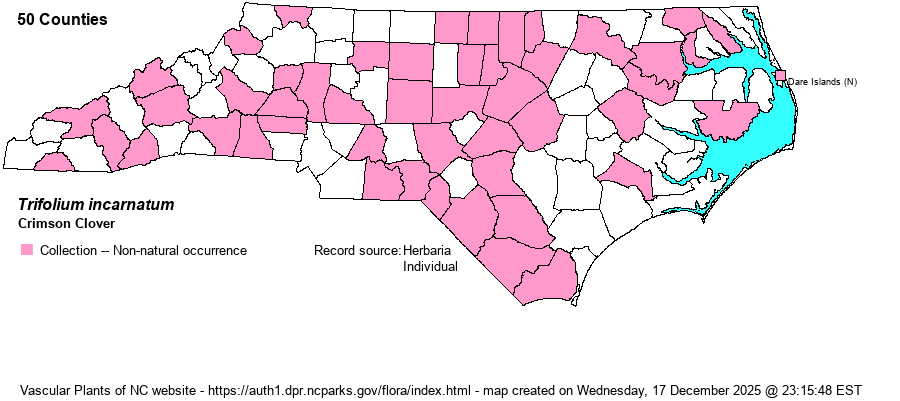| Author | L. | |
| Distribution | Throughout the state, with some gaps.
Native of Europe; in N.A. mostly ME to OH and MO, south to FL and TX; scattered elsewhere. | |
| Abundance | Generally uncommon, to locally frequent; this species is not an aggressive colonizer. Often planted in roadside stabilization projects and in roadside beautification seed-mixes, but rarely tends to escape from such plant beds. | |
| Habitat | Roadsides, fields, cropfields, meadows. | |
| Phenology | Flowering and fruiting April-October. | |
| Identification | Crimson Clover is robust, usually multi-stemmed, and reaches 1.5 feet tall. The leaflets are broad. The flowers are deep red or crimson, in an elongate inflorescence. | |
| Taxonomic Comments | Trifolium is a large genus of some 240-250 species globally, mostly north-temperate zone. Most are readily recognized as a clover by their 3 broad leaflets and globular to hemispherical head of densely-packed flowers. Flowers vary from white to pink, and red; the hop clovers have tiny yellow flowers. Some species were introduced for their forage value for livestock, others hitched a ride with hay, packing material, etc. Our two native species -- T. carolinianum and T. reflexum -- have suffered great loss of habitat and are now rare. | |
| Other Common Name(s) | | |
| State Rank | SE | |
| Global Rank | GNR | |
| State Status | | |
| US Status | | |
| USACE-agcp | | |
| USACE-emp | | |

